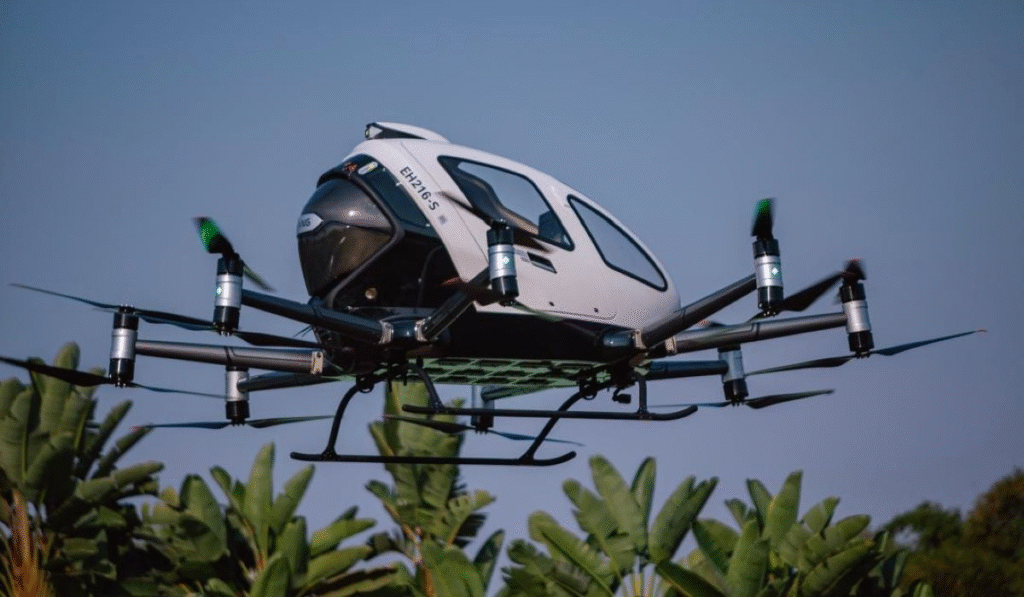Rwanda and Kenya are becoming prominent global hubs for testing advanced drone technologies—offering groundbreaking solutions for internet connectivity, emergency response, border monitoring, agriculture, and more, all at reduced operational costs.

Kenya Hosts Cutting-Edge High-Altitude Drone Trials
Africa’s vast airspaces, strategic geographic locations, and pressing development needs have positioned it as a prime environment for drone experimentation. In Kenya, Airbus’ spinoff company AALTO is testing Zephyr, a solar-powered high-altitude drone (HAPS – High-Altitude Platform Station). Tom Guilfoy, AALTO’s Country Manager for Kenya and Vice President of AALTO Port, spoke with drone expert Lakoi Takona about the company’s ambitions and Kenya’s emerging role in the sector.
Why Kenya Was Selected for Zephyr Testing
Guilfoy explained that Kenya’s favorable weather conditions—offering nearly year-round access to the stratosphere—and its strong technological and environmental leadership in Africa made it an ideal site for AALTO’s first permanent testing base, the AALTO Port in Laikipia. He noted that Kenya’s skilled labor pool, pro-innovation policies, and support from the Kenya Space Agency and Civil Aviation Authority accelerated the project’s regulatory approval process.
Kenya’s inclusion in President William Ruto’s Africa Green Industrialisation Initiative (AGII) further aligns AALTO’s work with the country’s broader sustainability and innovation agenda.
Inside Zephyr: A Next-Gen Stratospheric Drone
Zephyr is a fixed-wing drone with a 25-meter wingspan, yet it weighs only 75 kg. Fully solar-powered, it’s capable of remaining in the stratosphere for over two months without landing. Its current flight endurance record stands at 64 days—the longest for any unmanned aerial vehicle to date.
Operating between 60,000 and 80,000 feet, Zephyr drones can act as floating telecom towers or observation platforms, enabling:
- Low-latency 5G connectivity
- Emergency response
- Precision agriculture
- Border monitoring
- Disaster relief
- Real-time earth observation
The drone can cover an area of 7,500 sq. km, replacing up to 250 terrestrial towers, especially in hard-to-reach regions.
Establishing a Long-Term Presence in Kenya
With official permissions now in place, AALTO is moving from experimental testing to full infrastructure development. The AALTO Port project in Laikipia will eventually include:
- A dedicated runway
- Drone assembly and maintenance facilities
- A command-and-control center
- An operations headquarters
This expansion is expected to ramp up in 2026, creating jobs and contributing to the local economy. Initial roles will focus on construction and logistics, with more technical positions emerging later—such as drone mechanics, engineers, remote pilots, and communications operators.
AALTO aims to build a locally trained workforce. As operations grow, Kenyan professionals will take on increasingly complex roles, including aircraft maintenance and solar system servicing.
Broader Trends in African Drone Deployment
Africa’s unique geography and open airspace make it attractive for drone trials. Rwanda has already demonstrated success through a partnership with Zipline, an American drone company that started medical delivery tests in 2016. Today, drones in Rwanda deliver critical healthcare supplies like blood in under 30 minutes, compared to the 3-hour road delivery times of the past.
Rwanda’s ICT Minister Paula Ingabire emphasized the government’s vision to leverage technology for improved service delivery, citing drones as a life-saving innovation in the country’s healthcare system.
The Future: Africa as a Drone Tech Pioneer
The potential of High-Altitude Platform Stations (HAPS) like Zephyr is immense. These aircraft behave like pseudo-satellites, offering persistent aerial capabilities at lower costs and zero emissions. Their ability to operate above weather systems gives them an edge over traditional aircraft and satellites.
Mr. Guilfoy reiterated AALTO’s commitment to investing in Kenya for the next 3–5 years, stressing the importance of local supply chains, infrastructure, and talent development.
He also encouraged Africa’s youth to engage in the growing drone technology sector. Partnerships with universities and technical training programs will be essential in building a skilled workforce to meet the industry’s future demands.
In a nutshell
Africa is not just adopting new drone technologies—it is shaping their future. Kenya and Rwanda are at the helm of this transformation, positioning the continent as a leading player in global drone innovation. With supportive governments, advanced infrastructure, and a new generation of tech-savvy talent, the sky is no longer the limit.


